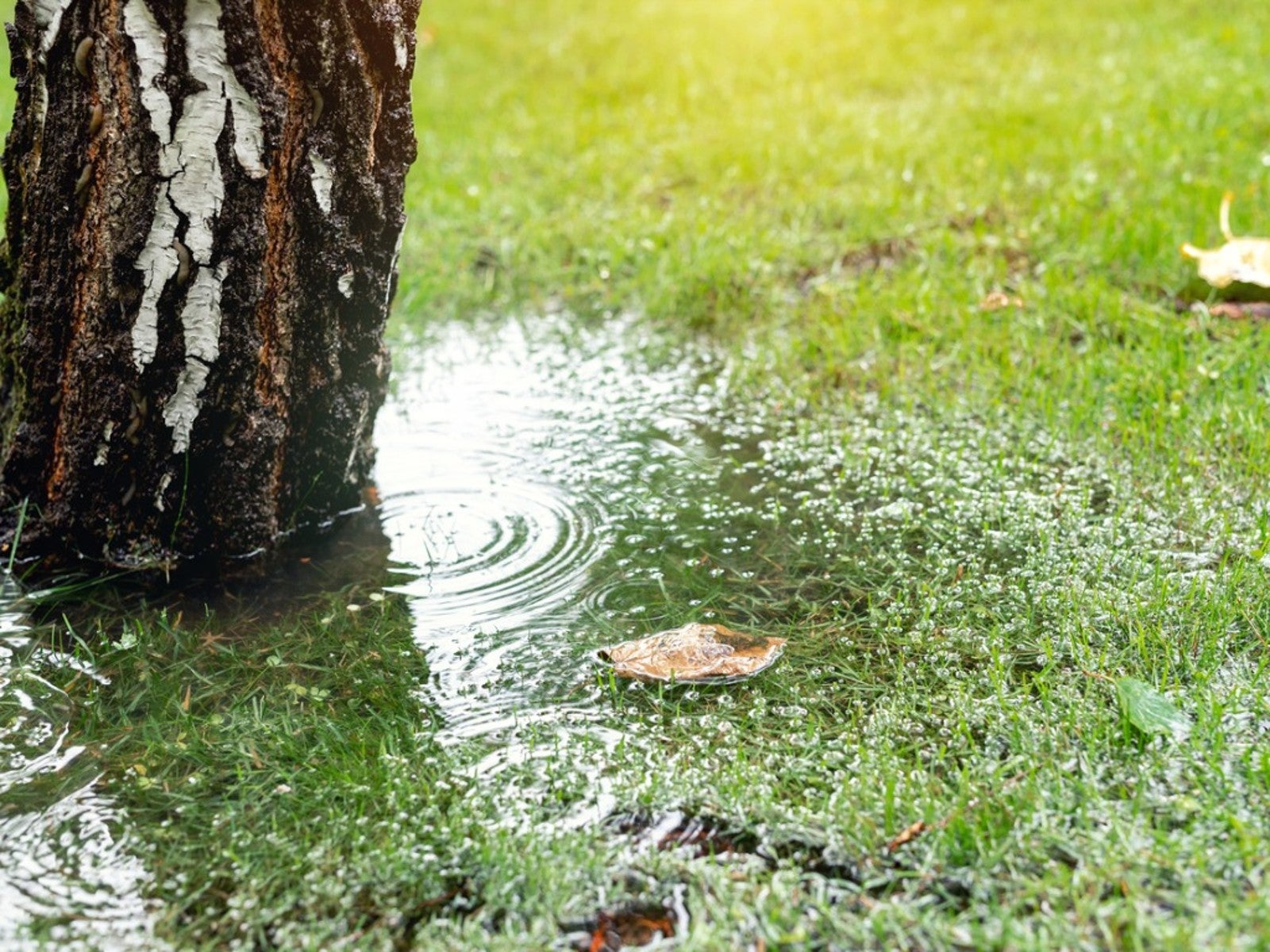
As development encroaches natural lands, porous surfaces are reduced through compaction and/or degradation of trees, shrubs, and groundcover. This means that stormwater runoff management becomes a serious issue. Stormwater runoff pollution can poison waterways and rain runoff in general can wreak havoc in both natural and urban areas, even in and around your home. To protect your home from the ravages of flooding, it's a good idea to implement some of the following rain water runoff ideas into your landscape.
About Stormwater Runoff
The decimation of the natural environment has seen an increase in flooding. Flooding can cause major property and environmental damages. This damage may occur in your basement, garage, or even home as well as in streets, highways, and even golf courses.
Water that flows unchecked through landscapes and out into streets runs either down the storm drain or into a ditch which then flows into the nearest body of water. All the pollutants (fertilizer, gasoline, pet waste, litter, etc.) are swept up and deposited into the body of water creating an environmental hazard that can damage plant life and kill wildlife.
Stormwater runoff management seeks to reparate damage caused by storms accompanied by large amounts of rain. Managing stormwater on your property before it gets into waterways reduces the potential pollutants that will be moved into the environment.
Rain Runoff Ideas
You may already know you have a runoff issue having observed saturated areas with puddling, out-flowing water rivulets, backed up storm drains, runnels, or gullies and water erosion on your property.
Note these signs of runoff. Check the soil for splash back along the foundation of the house and look for areas bare of plant life or soil loss. The best plan of attack in these instances is to add plants and mulch.
There are many types of mulch from pine straw to shredded hardwood. Whatever you choose to mulch with make sure you cover the area with 2 to 3 inches (5-8 cm.) to protect the soil and prevent erosion.
Sign up for the Gardening Know How newsletter today and receive a free copy of our e-book "How to Grow Delicious Tomatoes".
Best Plants for Water Runoff
Trees are a great addition to the landscape and help to reduce stormwater runoff. This is an especially good idea if you have a stream on your property. The trees will prevent the stream from eroding your landscape. Plant shade trees whose roots increase water filtration and whose leaves slow the rate of rainfall.
Meadow plantings are another great plant idea for managing runoff. Replace any lawn areas with ornamental grasses, flowers, and shrubs. A mimicked meadowland helps absorb excess water, and they reduce the time and cost you spend on mowing the lawn.
Rain gardens have become very popular and are now often found in urban areas. A rain garden is essentially a bowl-shaped garden area that captures and holds water until the soil is able to absorb it.
Cover sloping areas with vegetation to minimize erosion and stabilize the soil. Again, select adaptive, low maintenance, native plants.
Regarding turf grass, avoid planting on steep slopes, near waterways, or in areas difficult to access. If reseeding or re-sowing a lawn, select grasses adapted to local conditions.
Additional Stormwater Runoff Management
Take a good look around your home. Check roofs, gutters, and downspouts to make sure they are connected properly and free of debris. Downspouts should be pointed away from the house— specifically the foundation and towards a grassy area.
Areas that cannot drain into the landscape from the home should be equipped with a rain barrel at the downspout. A rain barrel will catch rainwater for later use in the garden.
Amend your soil with organic matter which reduces compaction and increases water retention while promoting healthy roots.
Avoid overwatering which contributes to runoff.
Only use chemical controls and fertilizer at their recommended rates and times. Also keep them off paved areas and do not sweep or hose into the street.
Rake and compost tree leaves so they do not block storm drains. Also remove these and grass clipping from street curbsides.
Mow more frequently and leave the grass clipping to decompose back into the sod.
Pick up pet waste and deposit it in the trash.

Amy Grant has been gardening for 30 years and writing for 15. A professional chef and caterer, Amy's area of expertise is culinary gardening.
